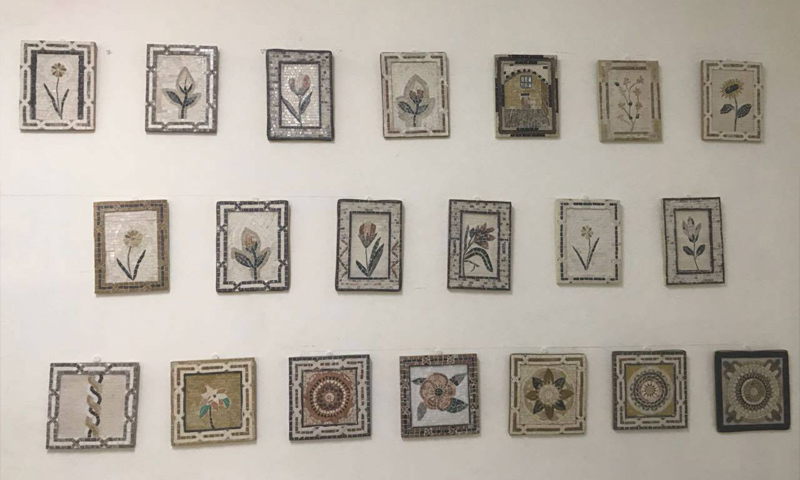



Supervised by the “Souriyat Across Borders” Organization (Syrian women across borders), an exhibition of Syrian “mosaic“ was conducted at the Organization’s headquarters in Amman the Jordanian capital, presenting pieces of the famous Syrian art, which people with disabilities have crafted.
The exhibition, launched on May 20, 2018, was the result of a training course, offered by the Organization to Syrian people with disabilities, based in Jordan, seeking to teach the trainees a profession that would help them make a living and integrate into society, in addition to a desire to raise people’s awareness about this traditional industry, according to Iyad Ayoubi, the Organization’s media and education official.
Ayoubi told Enab Baladi that the training courses, prepared by the Organization’s “Institute of Craft Skills Development,” included materials about different traditional crafts that relate to the history of Syria and its ancient civilization, such as Syrian ceramics, mosaic, and stone mosaic. The courses targeted children and women with disabilities, who have been taught according to academic curricula prepared by the “Syrian School,” which specialize in these crafts.
The “mosaic” training course does not only aim to teach the people a craft, according to Ayoubi, for it also aims to initiate trainers who can later on teach what they have learned to other children and women with disabilities, in addition to organizing exhibitions, through which the artistic pieces could be sold for the benefit of the trainees.
The activities of “Souriyat Across Borders,” functioning in Jordan and Northern Syria, are planned to support people who have developed psychological disabilities to help them overcome the war’s effect and to integrate into their surroundings.
According to the Organization’s media and education official, the “mosaic” pieces will soon be presented in an exhibition in the United States.
Mosaic is an ancient Syrian art that is more than 300 years deep in Damascus’ history; it is the art of grafting wood with shells, silver or ivory. Early in the 19th century, mosaic existed in the houses of almost all well-established Syrian families, after which it became a familiar décor in presidential palaces around the world.
The craft utilizes different types of wood including walnut, beech and other types, but the delicacy of it lies in the maker’s imagination, who innovatively manipulate geometrical shapes, octagons, squares, hexagons and triangles, to come up with unique pieces.
During the Syrian war, interest in this craft has gradually declined; however, the mosaic factories and workshops in the al-Hamidiyah, Midhat Pasha and Bab Sharqi markets in the capital city are still functioning, and some of the challenges which face this industry include expensive raw materials, the absence of local mosaic exhibitions and the difficulty of participating in Arab and international exhibitions.
The major challenge, nonetheless, is that the market today presents similar products, cheap and of commercial qualities, in terms of the used wood and raw materials, in addition to the fact that they are machine-made, and not handmade.
if you think the article contain wrong information or you have additional details Send Correction